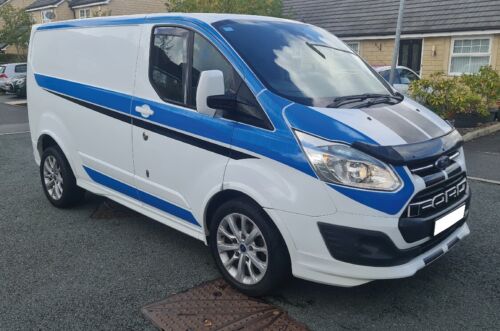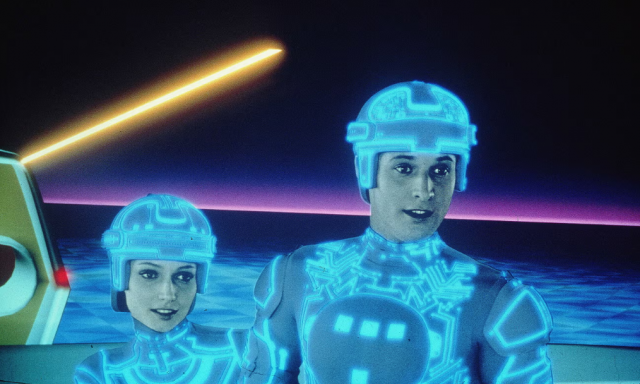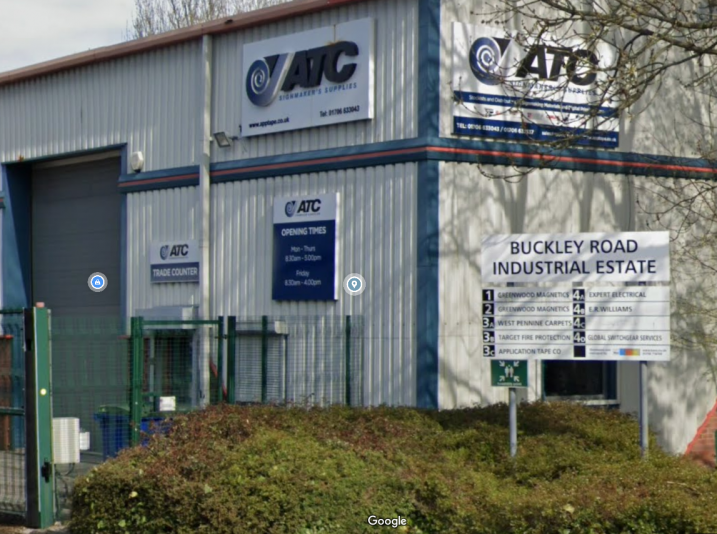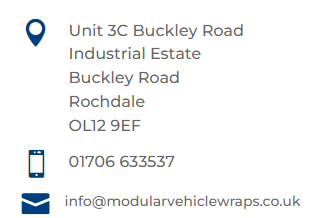Activity Feed › Forums › Sign Making Discussions › Computers – Tablets – Phones › Handheld 3D Scanners
-
Handheld 3D Scanners
Posted by David Hammond on November 1, 2023 at 4:11 pmIs anyone using a 3D scanner in their business?
I’ve looked into them on and off over the past few years. I liked the look of one that had great reviews and seemed to do what I’d want but also required a substantial spec PC to run it from.
So I’ve opted for what I think is the second-best scanner, which should do what I want, without the need to spend more money on new hardware.
I’m hoping to be able to create accurate cut templates from the scans.
At the moment it’s very manual, taking photos, resizing, digitising, then doing test cuts, altering, cutting, and repeating. Larger items require a paper template, then photographing, adjusting in Photoshop, scaling, and then tracing.
Curious if anyone has any real-world experience with these sorts of things. I’m hoping that it’s easier than the current methods.
Peter Cassidy replied 8 months ago 7 Members · 35 Replies -
35 Replies
-
What scanner did you buy? I have been interested in the revopoint pop 3 and wondered how effective it really was? I think it’s a great idea to add this to your business. You can use it to create accurate chapter 8 templates which would allow you to produce these kits in house. I also think you could use the same principle to create a series of templates to produce an effect almost as good as a printed wrap but which would take a fraction of the time to install. There’s a lot of potential uses with one of these
-
It’s a creality scanner, I was tempted by the einstar but needs a monster spec machine to run it.
That’s exactly what I am hoping to achieve, it’s working out how to take the 3d scan into illustrator and use it as cut path. I’ll suss it out over time.
I’ve recently quoted a customer on a modular wrap, I can see all the advantage of them, and it takes away lots of the tedious work.
-
-
The basics of it is:
* You Scan the 3D object
* Open in the scan software.
* Manually digitise the 3D scan on-screen within the scan software.
This is like digitising a logo to a vector format, but not as simple. and no matter how accurate the scanning software is, the digitising is a manual part and the accuracy is based on your ability to use/do it.
* You now have a 3D vector, but you need the vector 2D.
* You either source another software to flatten the 3D object or you will need a software that is able to do it within the scanning software because many are not able to.
* once complete, export the 2D scan in a usable format that will work with your sign software for cutting.There are lots of scanners available, but it’s a minefield knowing what will work for you.
e.g. the laser scan colour can be affected by the reflection of the surface of what you are scanning.
you will be scanning gloss surfaces, so that will be an issue. ways around this can be registration dots or a magnetic registration net, you place on the vehicle. Or maybe a matt dissolvable spray to coat the surface you are scanning.The key is to get a package of scanner and software combined to take as many of the headaches away as possible.
Like everything, the better the quality and functionality of the device and the software, the price quickly escalates.
-
Yes the software that most scanners come wit export 3d models, .obj format for example, which Illustrator won’t open. It’s that hurdle that’s got me confused at the moment but once the scanner arrives I’ll start experimenting.
-
-
If the software allows you to digitise the 3D scan, by creating a vector of the traced body part.
It “might be” that the vector is in a 3D file format and requires it to be flattened, and then exported to your sign software.By that I mean, when you scan a 3D object, then you start to digitise the scan into a vector shape, the vector is now also 3D.
i.e. when you digitise around a corner of a van. your vector shape is now bent, and the software has to be able to flatten it.
Many 3D scanner software only handle the scanning part. Others allow you to trace the 3D render on screen into a vector. but then do not allow the vector to be flattened to be used in a cutter. Often needing another flattening software. whilst some 3D scanning software will handle the whole process within one software. It’s a bit of a minefield.-
As I am learning 😂
I’m able to get something that resembles a 3d scan, but it’s then taking that into something useful I can work with that’s the hurdle!
-
-
As I mentioned, depending on the “laser colour” etc. the gloss surface of the vehicle can reflect the laser.
tap talc powder onto a duster and rub it over the area you are scanning. it will help reduce the laser reflection and give you a better scan.Every day is a school day, eh! 🙄🤣
-
From the experience you’ve had with the scanner so far, would you say it was possible to scan a full size vehicle (car) in it’s entirety and then print it out as a scale model? Or is the technology still lacking?
-
I’ve seen that some people have scanned full cars, so yes it is possible to scan it.
Printing it I don’t know, and it’s how useable the scan is. I would imagine.it would be better to have each panel as its own mesh, rather than just the car in its entirety.
-
-
this is a topic that i am keen to learn more on, I am also considering some experimenting..
I been looking at the market for Large Format Scanners but most are roll fed (which can be a problem) and my items that I want to scan can be 1 inch thick.
There is two scanners I really want to see, WideTek and Cruse which will take ‘paintings’ are repro them. Something I am very interested in or sub-out to.
There is a way of using a HP Flatbed Scanner, HP 4670, its a portable flat object scanner thats A4, you actually scan the item and stitch them together in photoshop, possibly the best scanner I have ever seen but demand is high for it.
Now, for Flatbed there a way using a massive tablet. made by the Logic Group dot com. That will allow you to trace shapes
I love to do more with 3D scanning, but the iPhones Pro’s have Lidar scanner, the newer phones are more accurate. I love to play with these as I am sure there is an app that is more point and click now, but who’s got a grand for a phone!?
If anyone got a Massive Scanner, I love to meet you and work with you
-
If anyone got a Massive Scanner, I love to meet you and work with you
@dave-rowland
This is a family site Dave, not Grindr, mate! 😳🤫🤣🤣🤣 Joking! 😉Dave, an iPhone for 3D scanning. As much as I am sure it has the capability to 3D scan mate. I think the intended use of, and output of the scans from devices like this will be very limited.
A while back I worked directly with HP Barcelona on an R&D project for a couple of years, which involved their Sprout computer and 3D wrap designing and visualisation software. The PC also had its own onboard 3D scanner. The PC alone was about £2500 back then and completely revolved around all things 3D and design. I had the Sprout computer at home and used it for my R&D. A very impressive machine and concept.
Although 3D scanning on the sprout was a simple one-touch scanning process etc. and a bit of a learning curve, you are still limited to the intended 3D print output. I do not mean I used it for 3D printing at all, I just mean I had a play with that side of it, and the concept was as simple as you could scan a comb in seconds, then click print on your computer which would be linked to a colour 3D printer, and print off the comb you just scanned.
My point is, here I had a state-of-the-art purpose-built Computer and software at £2500 and there were still limitations to its capabilities.This brings me back to my overall view, and that is, I think to do this correctly with regards to chevron kits, wrapping and general graphics, a mid-to-high range handheld 3D scanner, Computer and software along with some training, would be required to do it right and hit the ground running as soon as possible.
Now that said, Once David has had a chance to find his feet with his device and software, I am looking forward to hearing his feedback on how he is getting on with it. 😎 It would be a nice addition to most sign companies if relatively inexpensive.
-
-
ah very good and HP always likes to be involved with new ideas. I haven’t seen this Sprout before but had seen the concept.
With regards to Lidar, I was well impressed with it but couldn’t see the transition to 2D, however we do have measuring tape apps but I am still using vintage iPhone !
Another idea I have thought about is those projector boards you get in class rooms, which allows you to write on them, I would love to know if anyone has adapted them for countouring.
-
I had a quote for a 3d scanner, and software that will take the wireframe and produce a 2d pattern, costs were in excess $17,000, that’s a lot of work to make it pay.
This is the issue at the moment taking a 3d model, and flattening to the 2d pattern. Lots of 3d software available tailored to 3d printing.
-
i looked into this not so long ago and my view was do i really do so many chevron kits or need templates to justify a scanner and software and learning how to do it all?? nop! plus the price of kits and availability is getting much better.
-
I agree for Chevrons I don’t bother, just buy it in. My curiosity was with the modular wraps, and i can see potential there.
All very good buying them in, it’s when there’s a replacement panel required that there could be potential issues, ie colours, materials etc.
Panel fills mostly, as I can see the advantage of pre cutting fills, and once templated you’re away.
-
thanks david
i think it is just down to the volume of this type of work versus the cost of the 3D scanning setup. it just does not justify it for me.
-
-
-
I’m sure I read in a sign magazine a year or so ago about a company that were basically offering a wrapping service that didn’t actually involve wrapping a vehicle in the conventional way, but were applying printed panels to the entire van in discrete sections in a similar way to that done with chapter 8 graphics. This greatly speeds up the installation over a full wrap and is almost as effective but can be offered at a lower cost. I presume this is the type of system you have in mind David?
Edit – Just Googled modular wraps modularvehiclewraps.co.uk and I see this is exactly what you mean David
-
Exactly like that, I can see lots of potential in this type and style of graphics. Of course the hard core wrappers are set against it!
-
-
-
So the big question is – is your hand held scanner up to the job of scanning an entire vehicle as a starting point? Never mind getting to the next stage which is to actually produce the flattened templates from a scanned vehicle?
(I should say I’m interested in this from a hobbyist point of view as I would like to 3D scan entire vehicles then produce scale models from the scans)
-
Yes the value isn’t in the graphics, but the template. If you’re going to go down the supply only route, it’s not as hard for someone to copy the template.
-
-
Modular wrapping using “3D scanning” has been around for a few years now. However, the concept of doing it in this fashion is nothing new. I can specifically go back to around 1995 before wrapping, as we know it, came about. I was already “wrapping” before there was an actual term for it. (which I am sure others were doing way back then, also)
I used to play with and push different vinyl capabilities, some failed fast within an hour, while others worked a treat. Digital printing “as we know it today”, did not exist, so it was all solid colour graphics.I came up with three ways to perform relief cuts in the vinyl to stop the vinyl from failing in recessed areas.
* 1, was to wrap the vinyl as we know it. but once the vinyl had cooled, using a new blade, lightly cut a single line around the sharpest point of the recess, and you are done. IF the vinyl begins to fail, the cut will simply “open” leaving a hairline of white from the vehicle beneath.
* 2, apply the vinyl as normal without going into the recesses, simply BRIDGE the recesses.
Once you have completed the install. using a new blade and carefully angling your cut, with the blade resting against the knuckle at the top of the recess, run the blade around both sides and simply lift away the BRDIGE of vinyl. The finished result is pretty much the same as the “modular wrap” you are speaking about now.
* 3, Repeat method Two, but only cut away one side of the bridge, and allow the vinyl Bridge to be folded into the recess, creating less space between the cut vinyl.I would love to say “Oh I came up with these methods”, maybe I did because I know I never copied anyone, but at least 6 months later another Glasgow vehicle graphics company was in the same Mercedes Garage I did a lot of work for and they had 10 newly lettered vehicles with huge vinyl text at an angle running down the side of long wheel base sprinters, and every one of them had been down using Option 3
I appreciate my reply here is veering off 3D scanning for wraps. But my point is, other than for templating chevron kits and vehicle-specific graphics such as the M-Sport. The whole getting around performing full wraps with modular-type options can easily be performed without the need for 3D scanning, software etc etc performing relief cuts are quick and removing recessed areas is quick and easy once you are familiar with the technique. and I would say the overall look is “better” than the modular option because it is only the recesses that areas missing, so the wrap doesn’t have the TRON film vehicle look about its appearance. 😃
So my explanation is sort of leaning in agreement with @Jeff-Rea1 in that Chevron Kits etc are readily available the next day from the main suppliers, whereas a type of modular wrapping, without wrapping, can easily be acheived without the 3D scanner software etc.However, If a lot of your business is prodiminantly vehicle graphics, wraps and the likes of Chapter 8 reflective markings and even more so, fleet work, then I definately think adding a tool such as a 3D scanner and software is the way forward. By my own calculation, the budget should be in the region of £10,000 – £15,000.
-
@Phill-Fenton.
Interesting link Phill.
I had a quick look and it appears this so-called “wrapping company” is actually a Trade Supplier.
ATC – Application Tape Company.I do not use them and I certainly won’t consider them ever, in future. It is bad enough when a local cowboy opens up on your doorstep, but if your own supplier starts targeting your customers?!
-
To be fair though Rob, They do say “We are a TRADE-ONLY service supplying finished modular kits to Sign makers. We do not fit any kits and we do not sell directly to end users.”
-
True, they do Phill, so in that respect, they have at least clearly stated that.
But why the stand-alone website with a different name, why not on the ATC site with a section/pages dedicated to a service they offer the sign maker?
If you visit the trade “Application Tape Company” website, there is zero about modular wrapping kits to us the sign maker or trade in general. If you visit modular wrapping, there is no reference to ATC.-
I would imagine for SEO purposes they have a separate site
I use ATC as they’re relatively local, and they deliver on their own van, have produced chevron kits for me and never had an issue, actually really good service – Rare these days. In fact I ordered the wrong kit once and they produced it same day whilst I drove to collect it, and drop it off with my dad who was on site installing.
-
Thats good that they provide a great service, David. 👍
With regards to SEO, It would help their “trade site more” by having new pages, keywords, relevant content blah blah. But having zero on their trade site when their targeted audience is their trade customers, is not clever! 🙄
Imagine going into a restaurant and the new “Dish of the Month” isn’t advertised or even on the menu. 🤣
-
-
-
thanks for the detailed explanation rob. always very helpful. do you have any photos of the 3 options you mentioned?
-
i like the idea of 3d scanning and tracing vans and stuff. and I have seen some budget scanners being advertised. but reading this post has opened my eyes a bit 🤔 so i think i will hold fire and see if anyone has some success. 😆
-
Yep I’ve got 3 transits parked here for panel fills, though I’d try and scan the rear panel where the stupid rear view camera is… I’ll be trimming round them on the vehicles.
-
so are you actually using the scanner for this job then. are you cutting the panel infill using the scan?
-
I thought I’d try but the time messing around, it’s quicker with knifeless tape.
Although I’m just trying to scan the first one I’ve done, with the graphics on so it gives the scanner more points to track, and I can use the graphics to scale the scan, and create a cut path… but again not as easy as it first appears.
-
-
-
-
So the scan with the first van didn’t work, so I went “old school”
Took a photo, used the cut file for the lettering to align the photo and scale it, then traced the fill I did with knifeless tape, and boom, 98% there, just want to tidy one corner.
As the weather’s turned colder, I find sometimes the vinyl shatters rather than cuts. As it’s a fairly standard van the 10mins to do it seemed worth while.
-
if it was cheap and works accurately and it is easy to do, then everyone will be doing it soon! if it is expensive and difficult, then it might be better to let others do it first and learn from them. technology moves so fast. there will soon be cheaper, easier alternatives. i like the idea of this but it sounds like a lot of money.
Log in to reply.





